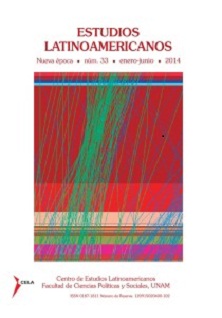Besieging history. Gramscian concepts through Fernando Martinez Heredia
Main Article Content
Abstract
The author intends to explain how Fernando Martinez Heredia brings back the “uses” of Gramsci’s work to reshape our understanding of XX Century Cuba, particularly the anti-Machado movement of 1930. This works focuses on three areas: 1) the conception of history as an issue; 2) the political dimension of the subject in history, and 3) the role of time as analytical axis of the Cuban reality. Throughout the article, we take into consideration the works of another Cuban scholar, Alejo Carpentier, who also studied the 1930 popular uprising. Both of them understood social mobilization in a particular way, mainly focusing on the people’s life experiences. However, they have a difference. One of them, the novelist, used existentialist arguments in the analysis, while the historian brought a social dimension to it.
Downloads
Download data is not yet available.
Article Details
How to Cite
Inclán, D. (2014). Besieging history. Gramscian concepts through Fernando Martinez Heredia. Estudios Latinoamericanos, (33), 13–29. https://doi.org/10.22201/cela.24484946e.2014.33.47168
Citas en Dimensions Service

Este obra está bajo una licencia de Creative Commons Reconocimiento-NoComercial-SinObraDerivada 4.0 Internacional.

